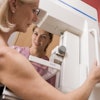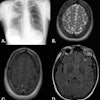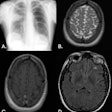
Unnecessary clinical variation in use of MRI and CT is causing significant carbon dioxide (CO2) emissions around the world, suggest findings published on 8 February in the European Journal of Internal Medicine.
A team led by Dr. Ludovico Furlan from the University of Milan estimated a significant amount of potentially avoidable emissions each year, up to over 175,000 tons of CO2 from countries within the G20 area.
"The environmental impact of inappropriate tests, procedures, and treatments should be extensively assessed and recommendations from the Choosing Wisely Campaigns may integrate environmental costs as relevant issues to healthcare workers, stakeholders, patients, and citizens," Furlan and colleagues wrote.
Previous reports suggest that healthcare systems contribute between 1% and 10% of greenhouse gas emissions depending on the country, with inappropriate and avoidable tests and procedures being a significant contributor in this area. Radiology is not immune to this trend; emissions in this field come from radioactive waste production, energy consumption, and MRI cooling systems with rare gasses, according to the researchers.
Furlan et al wanted to estimate the amount of CO2 emissions related to the unwarranted variation in the use of MRI and CT among countries of the G20 area. Countries included in the study were Australia, Canada, France, Germany, Italy, South Korea, and the U.S. The team measured energy expenditure from exams per every 1,000 citizens by kilowatt-hours (kWh).
The researchers found that the median energy use among the countries was 1,478 kWh for MRI exams and 177 kWh for CT exams per every 1,000 citizens. However, they also found variation among the countries, with Germany and France putting out the most overall energy among the modalities and Australia putting out the least amount. Also, while Germany had the largest energy output for MRI exams, South Korea had the largest output for CT exams.
| Energy output (kWh per 1,000 citizens) from MRI, CT exams among selected G20 countries | |||||||
| Australia | Italy | Canada | South Korea | U.S. | France | Germany | |
| MRI | 1,024 | 1,272 | 1,240 | 1,478 | 1,648 | 2,462 | 2,902 |
| CT | 176 | 102 | 177 | 304 | 298 | 243 | 177 |
| Total | 1,200 | 1,374 | 1,415 | 1,782 | 1,946 | 2,705 | 3,079 |
The number of MRIs performed in each country varied from 51.2 per 1,000 inhabitants in Australia to 145.1 per 1,000 in Germany. This includes a median value of 73.9 per 1,000 exams, which corresponds to the number of exams performed in South Korea. France and the U.S. also had values higher than the median.
For CT, Italy had the lowest rate of scans at 83.7 per 1,000, while South Korea and the U.S. had the highest rates at 248.8 and 243.9 per 1,000, respectively. Germany meanwhile had the median value at 144.7 per 1,000.
"If France, Germany, and the U.S. had the same levels of [energy expenditure] for CT and MRI exams as South Korea, in one year they would have 'saved' respectively 62, 108 and 54 gigawatt hours, that correspond to 5,075, 60,729 and 38,563 tons of CO2 each year," the study authors wrote. "In the case of Germany, such an amount of CO2 emissions would need an area of forest equivalent to 1.2 times the widest German national park [Bavarian Forest National Park] to be cleared from the atmosphere."
The researchers suggested that their findings may be a starting point for future studies that strategize on reducing the environmental footprint from healthcare systems and raising awareness.



















